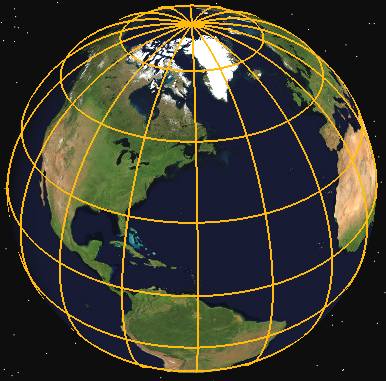|
An angel (from the Greek
- ángelos) is a supernatural being or spirit, usually humanoid in form, found in various religions and mythologies.
The theological study of angels is known as "angelology". In Zoroastrianism and Abrahamic religions they are often depicted as benevolent celestial beings who act as intermediaries between Heaven and Earth, or as guardian spirits or a guiding
influence.
The term "angel" has also been expanded to various notions of spirits found in many other religious traditions. Other roles of angels include protecting and guiding
human beings, and carrying out God's
tasks.
In art, angels are often depicted with wings on their back, a halo, robes and various forms of glowing light.
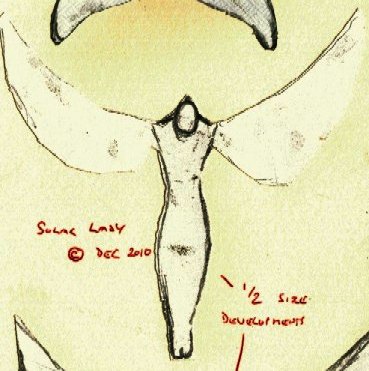
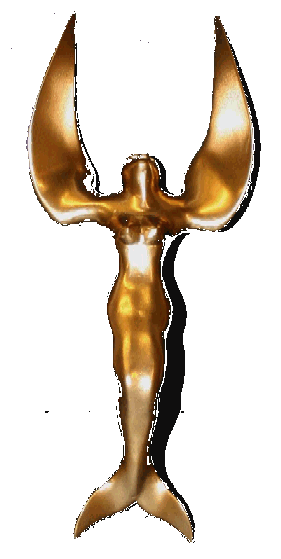
Development
of the Angel of the South, or, Solar Lady sculpture, from concept to first
study
JUDAISM
The Bible uses the
term ’ĕlōhîm; messenger of God, to refer to beings traditionally interpreted as angels. Later texts use other terms, such as (hā‘elyônîm; the upper ones).
The term, (malā’ikah), is used in the Qur'an. The Greek and Hebrew words, depending on the context may refer either to a human messenger or a supernatural messenger. The human messenger could possibly be a prophet or priest, such as Malachi, "my messenger", and the Greek superscription that the Book of Malachi was written "by the hand of his
messenger." Examples of a supernatural messenger are the "Malak YHWH," who is either a messenger from God, an aspect of
God (such as the Logos), or God himself as the messenger (the "theophanic angel.")
Scholar Michael D. Coogan notes that it is only in the late books that the terms "come to mean the benevolent semidivine beings familiar from later mythology and art." Daniel is the first biblical figure to refer to individual angels by name, mentioning Gabriel (God's primary messenger) in Daniel 9:21 and Michael (the holy fighter) in Daniel 10:13. These angels are part of Daniel's apocalyptic visions and are an important part of all apocalyptic literature. Coogan explains the development of this concept of angels: "In the postexilic period, with the development of explicit monotheism, these divine
beings — the 'sons of God' who were members of the Divine Council — were in effect demoted to what are now known as 'angels', understood as beings created by God, but immortal and thus superior to
humans." This conception of angels is best understood in contrast to demons and is often thought to be "influenced by the ancient Persian religious tradition of Zoroastrianism, which viewed the world as a battleground between forces of good and forces of evil, between light and darkness."
Philo of Alexandria identifies the angel with the Logos as far as the angel is the immaterial voice of God. The angel is something different than God Himself, but is conceived as God's instrument.
In post-Biblical Judaism, certain angels took on particular significance and developed unique personalities and roles. Though these archangels were believed to rank among the heavenly host, no systematic hierarchy ever developed. Metatron is considered one of the highest of the angels in Merkabah and Kabbalist mysticism and often serves as a scribe; he is briefly mentioned in the Talmud and figures prominently in Merkabah mystical texts. Michael, who serves as a warrior and advocate for Israel (Daniel 10:13), is looked upon particularly fondly. Gabriel is mentioned in the Book of Daniel (Daniel 8:15–17), the Book of Tobit, and briefly in the Talmud, as well as in many Merkabah mystical texts. There is no evidence in Judaism for the worship of angels, but there is evidence for the invocation and sometimes even conjuration of angels.
Medieval Jewish philosopher Maimonides explained his view of angels in his Guide for the Perplexed II:4 and II:6:
"...This leads Aristotle in turn to the demonstrated fact that God, glory and majesty to Him, does not do things by direct contact. God burns things by means of fire; fire is moved by the motion of the sphere; the sphere is moved by means of a disembodied intellect, these intellects being the 'angels which are near to Him', through whose mediation the spheres [planets] move... thus totally disembodied minds exist which emanate from God and are the intermediaries between God and all the bodies [objects] here in this world."
—Guide for the Perplexed II:4, Maimonides
According to Kabalah, there are four worlds and our world is the last world: the world of action (Assiyah). Angels exist in the worlds above as a 'task' of God. They are an extension of God to produce effects in this world. After an angel has completed its task, it ceases to exist. The angel is in effect the task. This is derived from the book of Genesis when Abraham meets with three angels and Lot meets with two. The task of one of the angels was to inform Abraham of his coming child. The other two were to save Lot and to destroy Sodom and Gomorrah.
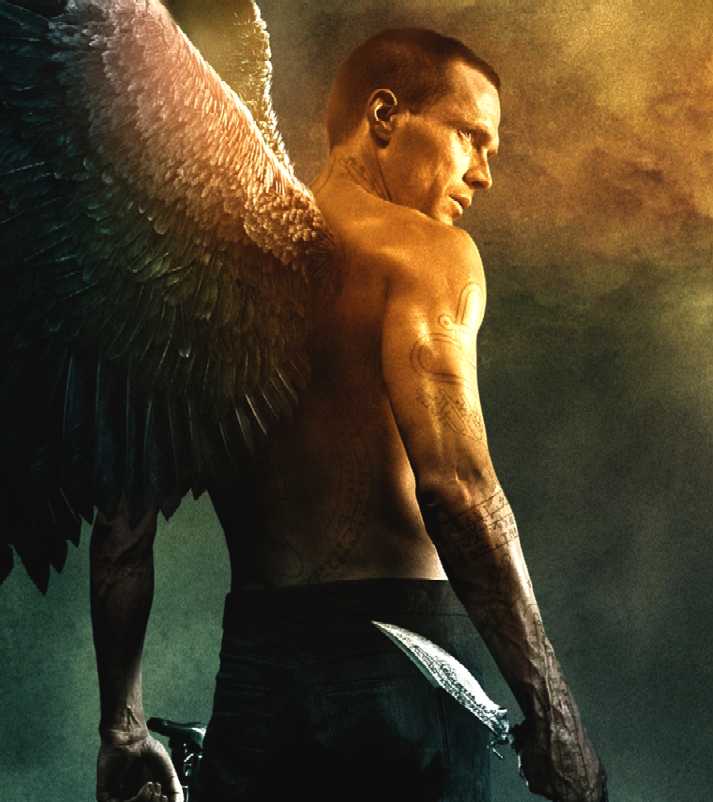
CHRISTIANITY
Early Christians inherited Jewish understandings of angels, which in turn may have been partly inherited from the Egyptians. In the early stage, the Christian concept of an angel characterized the angel as a messenger of God. Angels are creatures of good, spirits of love, and messengers of the savior Jesus Christ.
Later came identification of individual angelic messengers: Gabriel, Michael, Raphael, Uriel, and Lucifer. Then, in the space of little more than two centuries (from the 3rd to the 5th) the image of angels took on definite characteristics both in theology and in art.
By the late 4th century, the Church Fathers agreed that there were different categories of angels, with appropriate missions and activities assigned to them. There was, however, some disagreement regarding the nature of angels. Some argued that Angels had physical bodies, while some maintained that they were entirely spiritual. Some theologians had proposed that angels were not divine but on the level of immaterial beings subordinate to the Trinity. The resolution of this Trinitarian dispute included the development of doctrine about angels.
The angels are represented throughout the Christian Bible as a body of spiritual beings intermediate between God and men: "You have made him (man) a little less than the angels…" (Psalms 8:4-5). Some Christians believe that angels are created beings, and use the following passage as evidence: "praise ye Him, all His angels: praise ye Him, all His hosts… for He spoke and they were made. He commanded and they were created…" (Psalms 148:2-5; Colossians 1:16). The Fourth Lateran Council (1215) declared that the angels were created beings. The Council's decree Firmiter credimus (issued against the Albigenses) declared both that angels were created and that men were created after them. The First Vatican Council (1869) repeated this declaration in Dei Filius, the "Dogmatic constitution on the Catholic faith". Of note is that the Bible describes the function of angels as "messengers" and does not indicate when the creation of angels occurred.
Thomas Aquinas (13th century) relates angels to Aristotle's metaphysics in his Summa contra Gentiles, Summa Theologica, and in De substantiis separatis, a treatise on angelology.
Many Christians regard angels as asexual and not belonging to either gender as they interpret Matthew 22:30 in this way. Angels are on the other hand usually depicted in painting and sculpture as looking like male human beings. Their names are also masculine. And although angels have greater knowledge than men, they are not omniscient, as Matthew 24:36 points out. Christian art perhaps reflects the descriptions in Revelation 4:6–8 of the Four Living Creatures
and the descriptions in the Hebrew Bible of cherubim and seraphim (the chayot in Ezekiel's Merkabah vision and the Seraphim of Isaiah). However, while cherubim and seraphim have wings in the Bible, no angel is mentioned as having wings.
LEGION
- ANGELS MOVIE
Why do so many decent British actors slum it in effects movies? It may look like a sweet gig but there are hidden dangers, warns John Patterson
of the Telegraph.
Paul Bettany is an actor worthy of our admiration and respect, given his work in Darwin, Gangster No 1, Master And Commander and others. But Legion – in which he's a rebel angel saving humanity from God's rage at a gas station in the Mojave Desert – is one of those movies where he's the best thing in it, and everything going on around him is nonsense. This drearily blood-soaked piece of drive-in ephemera, which lacks the courage of its B-movie convictions, and certainly doesn't deserve him, displays all the dread symptoms of the contemporary horror movie: noise, incoherence, effects that look dated by release day, and British actors pissing away their talent. Does Bettany really have to save Dennis Quaid, as he must in Legion? Has it come to that?
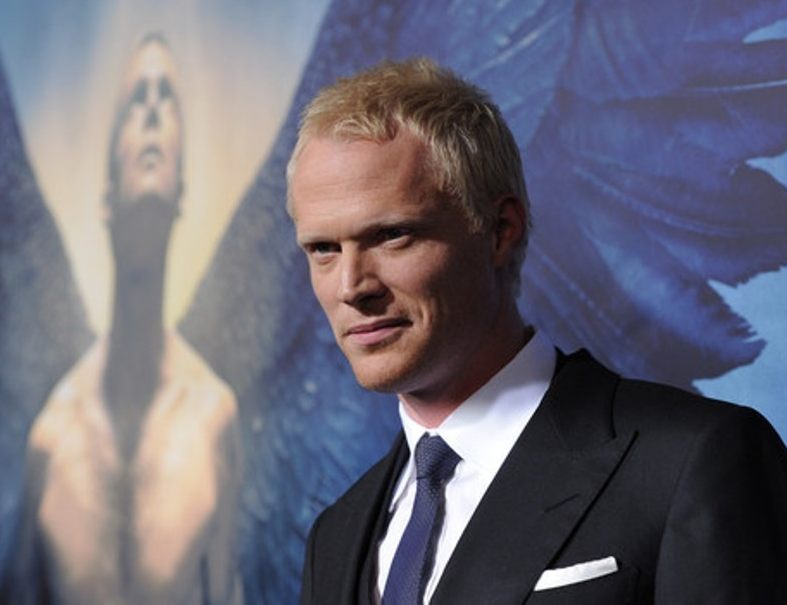
MORE
ABOUT THE MOVIE
Legion is a 2010 American apocalyptic supernatural action film directed by Scott Stewart, written by Peter Schink and Stewart. The cast includes Paul Bettany, Lucas Black, Tyrese Gibson, Adrianne Palicki, Kate Walsh and Dennis Quaid. Sony Pictures Worldwide Acquisitions Group acquired most of this film's worldwide distribution rights and the group opened this film in North America theatrically on January 22, 2010 through Screen Gems. Eventually, this $26 million film grossed $40 million in North American theaters.
PLOT
The Archangel Michael falls to Earth in Los Angeles and cuts off his wings. He steals a police car after a policeman is killed by another officer. He then heads for the Paradise Falls diner, near the edge of the Mojave Desert.
Meanwhile, Kyle, a single father driving to Los Angeles, stops at the diner. There he meets the owner, Bob Hanson; Hanson's son, Jeep; the short-order cook, Percy; a pregnant waitress, Charlie; a married couple, Howard and Sandra Anderson; and their rebellious teenage daughter, Audrey.
An old woman enters the diner. She seems pleasant at first, but then begins taunting the diner's patrons. When Howard confronts her, she rips his throat open, screeches that they are all going to die, and climbs up the ceiling like an insect. Kyle shoots her with a handgun before she can kill Bob. While Bob and Jeep stay at the diner, Percy, Kyle, Sandra, Audrey, and Charlie try to get the injured Howard to the hospital, but they are forced to turn back after passing through a swarm of flies.
Michael arrives and arms the patrons as the entire sky plunges into blackness. Hundreds of cars approach, filled with possessed people who begin to attack the diner. Michael leads the patrons in the fight against the possessed, but Howard is dragged away. Later, Michael explains that God has lost faith in mankind and has sent His angels to destroy the human race. He also reveals that Charlie's baby is destined to be the savior of mankind, and that it must stay alive if humanity is to have any hope of surviving. Michael also reveals that his original mission was to kill Charlie's baby, but he disagreed with God's orders, as he still has faith in the goodness of humanity.
The next morning, Sandra discovers Howard crucified behind the restaurant and covered with huge boils. She tries to rescue him, but he violently explodes into acid. Percy dies shielding Sandra from the blast, and Sandra is driven insane. Meanwhile, the remaining survivors (Jeep, Charlie, Kyle, Audrey, Sandra, and Bob) manage to catch a radio transmission revealing that there are other pockets of survivors holding out against the possessed, with one such refuge nearby. However, Michael advises them not to go, since they would be too vulnerable on the move.
That night, a second wave of possessed attack, luring Kyle out by having a father and his son show up and having the father run over, motivating Kyle to attempt to save the child. The child turns out to be possessed, kills Kyle, and attacks Audrey, but Michael intervenes and shoots down many possessed.
The attack pushes a panicked Charlie into labor. Audrey and Michael help her deliver the baby as trumpets sound, signaling the approach of the Archangel Gabriel. In a panic, Sandra breaks her restraints and tries to give the baby to the possessed, but Michael guns her down.
Moments later, Gabriel enters the diner, seriously injuring Bob. Michael gives Jeep the keys to the police cruiser he arrived in, urging the group to escape and telling Jeep, rather enigmatically, to "find the prophets, learn to read the instructions". The hordes of possessed humans are unable to approach Charlie's baby, so Jeep, Audrey, Charlie, and the baby make their way to the cruiser. Gabriel and Michael fight, ending with Gabriel's stabbing Michael through the chest with his mace. Michael dies and his body disappears. The dying Bob uses a lighter engraved "Hope" to ignite the diner's gas main, blowing up the diner, incinerating himself and the remaining possessed.
Jeep's body gets covered in the same mysterious drawings seen on Michael's body, which leads Jeep to realize that the tattoos are the instructions Michael spoke of. Gabriel then appears, having survived, and swoops down on the fleeing car. As he tries to reach Charlie, Audrey jumps on him and sacrifices herself by yelling at Jeep to slam on the brakes, sending Gabriel through the front windshield as the car crashes. Charlie, Jeep, and the baby survive the crash, but not Audrey.
Gabriel finally corners the three in the nearby mountains. He is about to kill them when Michael appears from Heaven, an angel once more, and stops Gabriel. Michael tells Gabriel that he (Michael) did what God needed, not what God wanted, thus giving humanity another chance, and also gives the impression with everything that happened so far was part of God's plan to test His angels. Ashamed of himself, Gabriel leaves. Michael explains to Jeep that he is the child's true protector and to have faith when Jeep asks if they will see Michael again. Michael then flies off. Charlie and Jeep make it to the top of the mountain and see a small town in the valley below.
Sometime later, Charlie, Jeep, and the baby are seen driving off into the distance with a station wagon full of weapons, after which the credits roll.
CAST
Paul Bettany as Michael, a fallen archangel and leader of the human survivors.
Lucas Black as Jeep Hanson, Bob's son and protector of Charlie's baby. He is in love with Charlie.
Tyrese Gibson as Kyle Williams, a divorced man heading to L.A. to battle custody over his son. In an alternate ending, Kyle survives.
Adrianne Palicki as Charlie, a downtrodden, pregnant waitress whose baby is humanity's savior. She is friends with Jeep.
Charles S. Dutton as Percy Walker, a religious single-handed cook, a former soldier, and Bob's friend.
Dennis Quaid as Bob Hanson, the diner's atheist owner.
Jon Tenney as Howard Anderson, Sandra's husband and Audrey's father.
Kevin Durand as archangel Gabriel, leader of the angel army, and main antagonist.
Willa Holland as Audrey Anderson, Howard and Sandra's daughter.
Kate Walsh as Sandra Anderson, Howard's wife and Audrey's mother.
Doug Jones as Ice Cream Man, a possessed ice cream man who attacks the diner.
Jeanette Miller as Gladys Foster, the possessed old woman in the diner.
PRODUCTION
Principal photography took place in New Mexico in the summer of 2009.
BOX OFFICE
Legion was released on January 22, 2010 in 2,476 theaters and took in $6,686,233—$2,700 per theater its opening
day. On its opening weekend it grossed $17,501,625—$7,069 per theater and placed No. 2, only behind Avatar. It placed No. 6 on its second weekend, and grossed an estimated $6,800,000—$2,746 per theater, a 61.1% drop from the previous weekend. The film has come to gross $67,918,658 worldwide.
CRITICS
The film received very negative reviews from critics. Review aggregator Rotten Tomatoes gives the film a score of 20% based on reviews from 99 critics, with an average rating average of 3.8 out of 10. The site's general consensus is: "Despite a solid cast and intermittent thrills, Legion suffers from a curiously languid pace, confused plot, and an excess of dialogue." Metacritic, which assigns a weighted average score out of 0–100 reviews from film critics, has a rating score of 32% based on 14 reviews.
Nomad of Dread Central gave the film a one and a half out of five, saying, "The finished product is shockingly bad. If countless angles of people firing guns with spent shells clinking to the ground is all your heart yearns for, then Legion may be your ideal Saturday night. Hoping for anything more is an exercise in futility. Spare yourself the agony." Brad Miska of Bloody Disgusting.com gave it 1 out of 5 skulls, calling it "a prude film with some potential. It's boring, slow paced and it takes itself way too seriously." Variety film critic Joe Leydon gave the film a mixed analysis. Leydon claimed "Even when the blood-and-thunder hokiness of the over-the-top plot tilts perilously close to absurdity, the admirably straight-faced performances by well-cast lead players provide just enough counterbalance to sustain curiosity and sympathy." Frank Scheck of The Hollywood Reporter also gave the film a mixed review stating "As the above description demonstrates, the goings-on in Legion are seriously silly (not to mention more than a little derivative of endless movies, especially the Terminator series), but director Scott Stewart has provided enough stylish finesse to make the proceedings a real hoot.
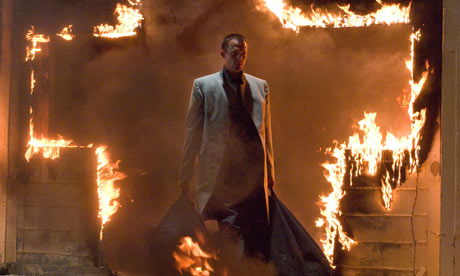
THE
ANGEL OF THE NORTH
The Angel of the North is a contemporary sculpture, designed by Antony Gormley, which is located in Gateshead, Tyne and Wear, England.
It is a steel sculpture of an angel, 20 metres (66 ft) tall, with wings measuring 54 metres (177 ft) across. The wings do not stand straight sideways, but are angled 3.5 degrees forward; Gormley did this to create "a sense of embrace".
It stands on a hill on the southern edge of Low Fell, overlooking the A1 and A167 roads into Tyneside, and the East Coast Main Line rail route, south of the site of Team Colliery.
Concept
According to Gormley, the significance of an angel was three-fold: first, to signify that beneath the site of its construction,
coal miners worked for two centuries; second, to grasp the transition from an industrial to information age, and third, to serve as a focus for our evolving hopes and fears.
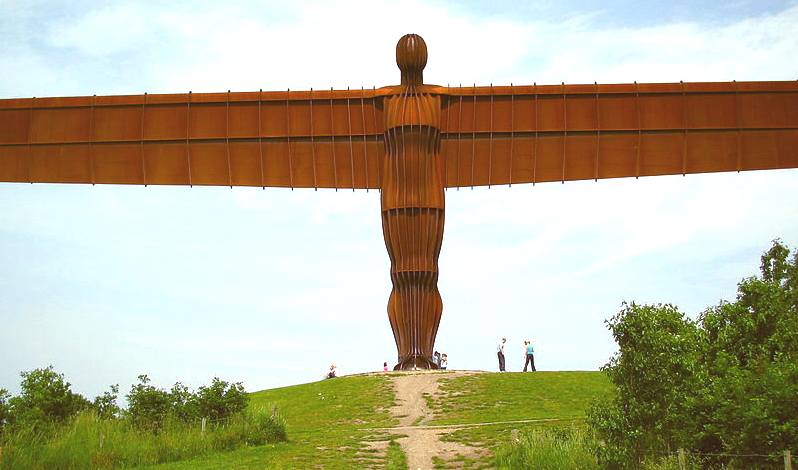
Construction
Work began on the project in 1994 and cost £1 million. Most of the project funding was provided by the National Lottery. The Angel was finished on 16 February 1998.
Due to its exposed location, the sculpture was built to withstand winds of over 100 mph (160 km/h). Thus, foundations containing 600 tonnes of concrete anchor the sculpture to rock 70 feet (21 m) below. The sculpture was built at Hartlepool
Steel Fabrications Ltd using Corten weather resistant steel. It was made in three parts—with the body weighing 100 tonnes and two wings weighing 50 tonnes each—then brought to its site by road. It took five hours for the body to be transported from its construction site in Hartlepool, up the A19 road to the site.
The Angel aroused some controversy in British newspapers, at first, including a "Gateshead stop the statue" campaign, while local councillor Martin Callanan was especially strong in his opposition. However, it has since been considered to be a landmark for North East England and has been listed by one organisation as an "Icon of England". It has often been used in film and television to represent Tyneside, as are other local landmarks such as the Tyne Bridge and the Gateshead Millennium Bridge.
The sculpture is known locally as the "Gateshead Flasher", because of its location and appearance. The sculpture was decorated in 1998 by fans of the Newcastle United
football team who paid tribute to local hero Alan Shearer by putting a giant team shirt over the Angel, complete with Shearer's name and famous number 9.
Maquettes
Several maquettes were produced during the development stage of the project. A man-sized model from which the sculpture was created was sold at auction for £2 million in July 2008. An additional bronze maquette used in fundraising in the 1990s, owned by Gateshead Council, was valued at £1 million on the BBC show Antiques Roadshow on 16 November 2008. That was the most valuable item ever appraised on the programme. A maquette was acquired by the National Gallery of
Australia in 2011 and stands in its Sculpture Garden.
Other projects
Inspired by the Angel of the North, several similar projects have been proposed. The 'Angel of the South' title has been given by some to the Willow Man which sits to the side of the M5 in Somerset, while a project, informally named the Angel of the South, has been proposed in Ebbsfleet, Kent. The sculpture Brick Man (also by Gormley) was proposed for the Holbeck area of Leeds.
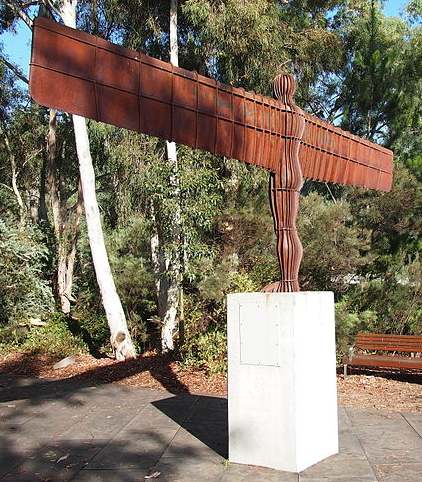
ANGELS
& DEMONS
Angels & Demons is a 2000 bestselling mystery-thriller novel written by American author
Dan Brown and published by Pocket Books. The novel introduces the character Robert Langdon, who is also the protagonist of Brown's subsequent 2003 novel, The
Da Vinci Code, 2009 novel, The Lost Symbol and 2013 novel Inferno. It also shares many stylistic literary elements with its sequel, such as conspiracies of secret societies, a single-day time frame, and the Catholic Church. Ancient history, architecture, and symbolism are also heavily referenced throughout the book. A film adaptation was released on May 15, 2009, though it was set after the events of The Da Vinci Code film, which had been released in 2006.
The book contains several ambigrams created by real-life typographer John Langdon. Besides the "Angels And Demons" and "Illuminati" designs, the title of the book is also presented as an ambigram on the hardcover book jacket (see illustration at right on this page), and on the inside cover of the paperback versions. The book also contains ambigrams of the words Earth,
Air, Fire, and Water, which has served to bring the art of ambigrams to public attention by virtue of the popularity of the book. The "Illuminati Diamond" mentioned in the book is an ambigram of the four elements arranged in the shape of a
diamond.
PLOT
The plot follows Harvard symbologist Robert Langdon, as he tries to stop the Illuminati, a legendary secret society, from destroying Vatican City with the newly discovered power of antimatter.
CERN director Maximilian Kohler discovers one of the facility's physicists, Leonardo Vetra, murdered. His chest is branded with an ambigram of the word "Illuminati". Kohler contacts Robert Langdon, an expert on the Illuminati, who determines that the ambigram is authentic. Kohler calls Vetra's adopted daughter Vittoria to the scene, and it is ascertained that the Illuminati have stolen a canister containing antimatter — a substance with destructive potential comparable to a small nuclear weapon. When at CERN the canister is stored in a unique
electrical charger which ensures the antimatter's stability but when removed its back-up battery provides power for 24 hours after which the anti-matter will self-destruct. The canister is somewhere in Vatican City, with a security camera in front of it, as its digital clock counts down to the explosion.
Langdon and Vittoria make their way to Vatican City, where the Pope has recently died. It is discovered that the four Preferiti, cardinals who are the most likely papal successor, are missing. Langdon and Vittoria search for the Preferiti in hopes that they will also find the antimatter canister. Their search is assisted by Camerlengo Carlo Ventresca (the late pope's closest aide) and the Vatican's Swiss Guard.
Langdon attempts to retrace the steps of the "Path of Illumination", a process once used by the Illuminati as a means of inducting new members; aspirants to the order were required to follow a series of subtle clues left in various landmarks in and around Rome. The clues indicate the secret meeting place of the Illuminati. Langdon sets off on the Path of Illumination in hopes of delivering the Preferiti and recovering the antimatter canister.
The Path leads Langdon to four locations in Rome, each associated with one of the primordial elements: 'Earth', 'Air', 'Fire', and 'Water'. Langdon finds one of the Preferiti murdered in a way thematically related to each location's related element. The first cardinal was branded with an Earth ambigram and had soil forced down his throat, suffocating him; the second was branded with an Air ambigram and had his lungs punctured; the third was branded with a Fire ambigram and was burned alive; and the fourth was branded with a Water ambigram and was wrapped in chains and left to drown at the bottom of a fountain.
After finding the bodies of the first two Preferiti, Langdon hurries to the Santa Maria della Vittoria Basilica and finds the Preferiti's abductor in the act of setting the third cardinal on fire. The kidnapper is an unnamed assassin who is working under the orders of the Illuminati master "Janus", whose true identity is unknown. Commander Olivetti is killed and the assassin kidnaps Vittoria. Langdon escapes and accosts the assassin at the final element's landmark (Water), but is unable to save the cardinal.
Langdon must complete the Path of Illumination in order to find the assassin and rescue Vittoria. His search leads him to Castel Sant'Angelo, which hides a tunnel leading directly into the pope's chambers in the Vatican. Langdon frees Vittoria, and together they send the assassin falling several hundred feet to his death. The two hurry back to St. Peter's Basilica, where they find that Kohler has arrived to confront the camerlengo in private. Langdon and Vittoria fear that Kohler is Janus, and that he has come to murder the camerlengo. Hearing the camerlengo scream in agony from being branded with the Illuminati Diamond, the Swiss Guards burst into the room and open fire on Kohler. Just before he dies, Kohler gives Langdon a videotape that he claims will explain everything.
With time running out, the Swiss Guard evacuates the Basilica. The camerlengo rushes back in, claiming that he has received a vision revealing the location of the antimatter canister. With Langdon in pursuit, the camerlengo ventures into the catacombs and finds the canister sitting atop the tomb of Saint Peter. Langdon and the camerlengo retrieve the antimatter and get in a helicopter with only minutes to spare. The camerlengo manages to parachute safely onto the roof of St. Peter's just as the canister explodes harmlessly in the sky. The crowd in St. Peter's Square look in awe as the camerlengo stands triumphantly before them. Because of this "miracle", the papal conclave debate whether to elect the camerlengo as the new Pope. Langdon managed to survive the explosion by using a window cover from the
helicopter as a parachute, and landed in the Tiber River.
After viewing Kohler's tape Langdon, Vittoria, and the cardinals confront the camerlengo; Shortly before the beginning of the novel, the Pope met with Leonardo Vetra who believed that anti-matter was capable of establishing a link between humanity and God. Vetra's beliefs caused great discomfort to the camerlengo. While discussing Vetra, the pope reveals that his support is due to science having given him a son. Without waiting to hear the explanation (that the child was the result of artificial insemination), and horrified that the Pope appeared to have broken his vow of chastity, the camerlengo plots to "rectify" the situation. He poisoned the pope and, under the guise of an Illuminati master (Janus), he recruited the assassin, to kill Vetra, steal the antimatter, and kidnap and murder the Preferiti. The Camerlengo planted the antimatter in St. Peter's in order to be seen as the savior of Christendom. The Illuminati "involvement" was merely a plot engineered by the camerlengo to cover his own plans. It is revealed that Camerlengo Ventresca himself was the birth son of the late pope, conceived through artificial insemination. Overcome with guilt Ventresca soaks himself in oil and immolates himself before a crowd of onlookers in St. Peter's Square.
Characters
Robert Langdon: A professor of symbology at Harvard University and the protagonist of the novel. He is flown to CERN to help investigate the murder of Leonardo Vetra. He is described as wearing a pair of chino pants, turtleneck, and tweed jacket. His name is a tribute to John Langdon.
Leonardo Vetra: A scientist working at CERN and a priest. He is researching on antimatter when he is murdered by the Assassin. He is also the adoptive father of
Vittoria.
Vittoria Vetra: The adopted daughter of Vetra. She, like her father, works with CERN. Her research focuses on biology and physics. The reader learns early in the novel that Vittoria worked with her father in their research of antimatter.
Camerlengo Carlo Ventresca: The Camerlengo (Papal Chamberlain) during the conclave. He murdered the pope, who is later revealed to have been his biological father. His codename for dealing with the assassin, "Janus", was taken from the two-faced
Roman god of beginnings and ends, and for whom the month of January was named.
Cardinal Saverio Mortati: The most senior cardinal in the conclave, and the current Dean of the College of Cardinals. He was the Devil's Advocate for the late pope.
Commander Olivetti: The commandant of the Swiss Guard. He is initially skeptical on the claims of Langdon and Vittoria until he talks with the Hassassin. He, along with other Swiss Guards, search desperately for the missing antimatter hidden somewhere at the Vatican. He is killed by the Hassassin at the church of Santa Maria della
Vittoria.
Captain Rocher: The second in command after Commander Olivetti. He is contacted by Max Kohler telling his knowledge on the real cause of the events. He is killed by Lt. Chartrand, who was under the impression that Rocher was an
Illuminatus.
Hassassin: The killer hired by Janus, the Camerlengo in disguise, to fulfill his plans. He is of Middle Eastern origin and displays his sadistic lust for women throughout the novel. He murders Leonardo Vetra, the Preferiti, and Commander Olivetti. He dies after being pushed from a balcony by Langdon at the Castel Sant'Angelo and breaking his back on a pile of cannonballs below.
Maximilian Kohler: The director of CERN. He is feared at CERN despite his paralysis. His wheelchair contains electronic gadgets such as a computer, telephone, pager, video camera, and a gun. He contacts Langdon to help him find the killer of his friend, Leonardo Vetra. He blames the Church for his paralysis, due to his highly religious parents denying him medical care as a child, becoming a scientist as a way to rebel.
Gunther Glick and Chinita Macri: A reporter and his photojournalist for the BBC. They are contacted by the Hassassin regarding the events happening in the Vatican. Glick has a notorious reputation as a sensationalist and conspiracy theorist journalist. Macri, meanwhile, is a veteran
camera crew and a foil to Glick. They have the first-hand account on the events in the novel, from the beginning of the conclave to the election of Mortati as pope.
Lieutenant Chartrand: A young Swiss Guard. He, together with Commander Olivetti and Capt. Rocher, search desperately for the antimatter hidden somewhere in the Vatican. He shoots and kills Captain Rocher after he is mistaken as an Illuminatus. Near the end of the novel, he is sent by the new pope to give the Illuminati Diamond as an indefinite loan to Langdon.
Cardinal Ebner: One of the four Preferiti and a cardinal from Frankfurt, Germany. He is killed by asphyxiation, by means of putting dirt and soil into his mouth.
Cardinal Lamassé: One of the four Preferiti and a cardinal from Paris, France. He is killed by punctures to his lungs, from which he bled to death.
Cardinal Guidera: One of the four Preferiti and a cardinal from Barcelona, Spain. He is incinerated alive.
Cardinal Baggia: One of the four Preferiti and a cardinal from Milan, Italy and the favorite to succeed as the new pope. He was drowned to
death.
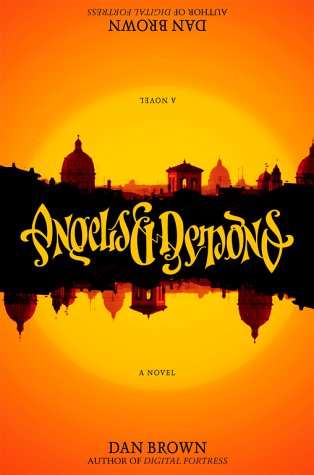
INACCURACIES
The book's first edition contained numerous inaccuracies of location of places in Rome, as well as incorrect uses of Italian language. Some of the language issues were corrected in the following editions.
Aside from the explicit introduction, the book depicts various fictional experts explaining matters in science, technology, and history in which critics have pointed out inaccuracies. An example of this is the antimatter discussions, wherein the book suggests that antimatter can be produced in useful and practical quantities and will be a limitless source of power. CERN published a FAQ page about Angels & Demons on their website stating that antimatter cannot be used as an energy source because creating it takes more energy than it produces.
Angels & Demons Decoded, a documentary on an American cable television network, The History Channel, premiered on May 10, 2009, shortly before the release of the novel's film adaptation. The documentary explores the various bases of the novel's story, as well as its inaccuracies. A CERN official, for example, points out that over the last 20 years, approximately 10 billionths of a gram of antimatter has been produced at the facility, whose explosive yield is equivalent to that of a firecracker, far less than is needed for it to be the threat depicted in the novel.
He
often asked: Why me? And nobody answered him in the lonely hours of
desperation and soul searching. He had challenged local authority. Poked his
nose in to help a few souls less willing than himself to put his head above
the parapet - and this was his reward. But god works in mysterious ways.
More suffering was to follow in 4 short years than most people suffer in a
lifetime. Humiliation, degradation and suspicion, haunt him to this day and
will continue to haunt him, the price identifying himself as a target.
An activist, someone who questions right
and wrong. The way to silence their critic was to convict him of a crime
so that nobody would believe him anymore. They didn't believe him in any
case, but as he started winning planning appeals routinely, even the
doubting Thomas's paid attention. An action group was formed with him
leading a legal charge that reversed local authority fortunes. They had to
silence him. They needed to find a reason for a witch trial. Yes, god works
in mysterious ways.
They
crucified him. The local police produced evidence at his trial that was
guaranteed to convict him, then made sure the local
press
published details of his conviction
so that nobody would take
his revelations about corruption in local government seriously. The so-called forensic
evidence turned out to be junk science, a natural feature that was
understood in the USA to be just that - had not found its way into UK
guidance.
Presented in court as controversial, what the Crown's expert meant
was that US studies did not accord with UK studies at the time. They'd found
a window of opportunity in which to present a case they knew would soon tell
another story, but they also had friends in high places; the appeal court to
be exact. A secret order which includes judges and administrative staff
would deny any appeal and the trial transcript necessary to perfect grounds
of appeal.
Two months
after his trial in the UK, UK medical studies were adopted from the USA. The victim of this
injustice would not learn that until three years into his sentence. The CCRC
did not tell him about the cases they had referred to the Court of Appeal on
near identical grounds -
and in his case, they turned a blind eye. Secret societies such as the
masons infiltrate all walks of life. This is a true story based on
official documents. So how is it that god works in mysterious ways? We will
tell you. If this man had not been convicted he would never have discovered
this other world and just how far corruption reaches. He would not have read
the cases he was forced to read and would not have met other victims of a
corrupt system - howsoever noble the principles upon which the corruption is
based, it is corrupt nevertheless.
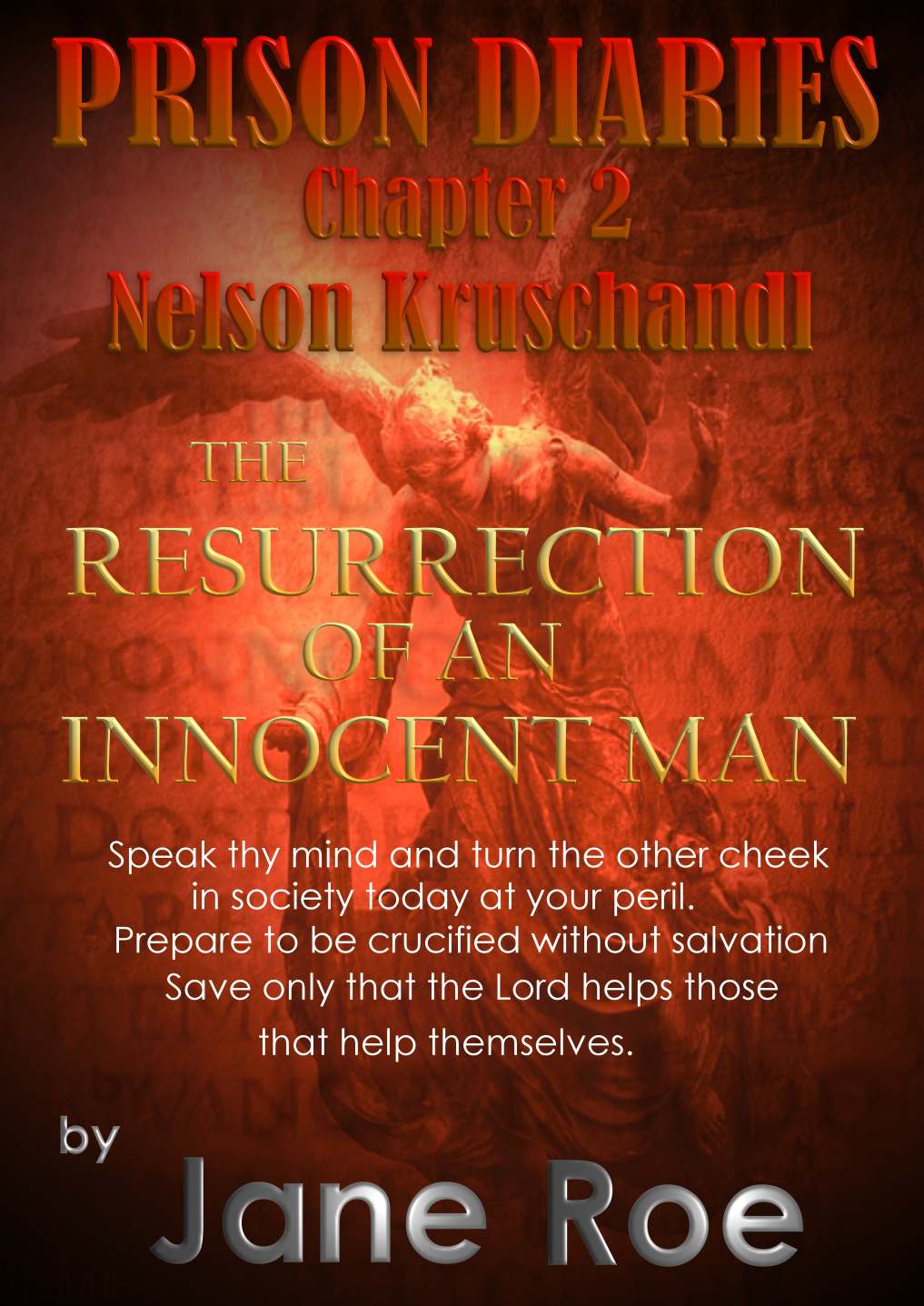
His
barrister didn't show the jury the accused' diaries, he should have, because
the girl's mother reminded the accused to send Valentines cards every year -
which she, err, seems to have forgotten to mention to the court. Yet
much play was made of this gesture and compliance to his ex-fiancés wishes,
as being proof that there was a relationship where there was not, just a man
doing as he was bid with a kind heart. The girl's mother also forgot to tell the prosecution about the existence of her own
work diaries.
These diaries reveal that the accused was not alone with the girl as she had
claimed. This would have been realised by the mother, but only after a story
for the girl had been concocted in a two week period that the police allowed
before taping an interview. When asked in court why she had not mentioned
her diary before, the mother said "I was not asked." Yet this
woman deliberated in writing which notes the police collected as evidence,
so that the woman, a professional dealing with cognitive issues on a
day-to-day basis, could not have failed to grasp the importance of her
diaries - to her the importance of concealing the diaries. The Criminal
Cases Review Commission refused to provide transcripts of the mother's
evidence for an appeal barrister. One must conclude that the CCRC are
complicit in the cover up.
Local newspapers breached a Court Order prohibiting coverage, and published
mid-trial, a favour to the police perhaps to virtually
guarantee conviction. The jury were of course reading those newspapers on
the doorsteps of the court during smoking breaks.
Nearly all the local papers published at the same time - in orchestrated
fashion - obviously from a shared source.
Is that responsible reporting? They knew such coverage would influence the
thinking of jurors and the public. As we say, secret societies get
everywhere. The woman's father was a mason. The girl and her mother
threatened to get the man if he left the family. Should it not have been the
other way around if what was alleged was true.
This man served nearly four years for a crime he did not commit. God moves
in mysterious ways indeed - for he has survived his ordeal, coming out of
prison a stronger
man, as more worldly wise man, eyes opened to the wicked in the world -
and he is still willing to stand
up for his beliefs and the rights of others. If you have any information
that might help to expose the lie upon which this conviction was based, we
should like to hear from you. Compensation for whistle blowing is unlimited.
Should you work for the Sussex police or the hospital that supplied the
police with the bogus medical evidence.
LINKS
and REFERENCE
http://en.wikipedia.org/wiki/Angels_%26_Demons
GNU
free documentation license
http://en.wikipedia.org/wiki/Resurrection_of_Jesus
http://en.wikipedia.org/wiki/Jesus_Christ
http://www.metacritic.com/movie/legion
http://trailers.apple.com/trailers/sony_pictures/legion/
http://www.rottentomatoes.com/m/legion_2010/
http://www.imdb.com/title/tt1038686/
http://en.wikipedia.org/wiki/Legion_%282010_film%29
http://www.sonypictures.com/movies/legion/site/
http://www.themoviespoiler.com/Spoilers/legion.html
http://www.cinemablend.com/reviews/Legion-4417.html
Metacritic
Legion
Trailers
Apple Legion
Rotten
Tomatoes Legion
IMDB
Legion
Wikipedia
Legion
Sony
Pictures Legion
The
Movie Spoiler Legion
Cinema
Blend Reviews Legion
|
